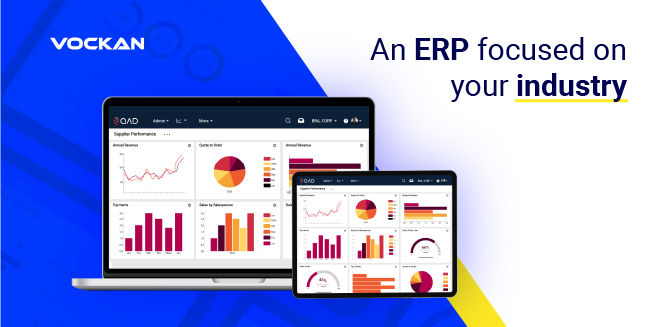Much of the management of a manufacturing operation is directly linked to advance planning.
In an environment where deadlines, costs and demands are constantly changing, predicting what is to come is essential, especially when these decisions impact the company’s competitiveness.
One of the most critical areas in this context is capacity requirements planning.
It is one of the pillars for ensuring that available resources, such as machines, equipment and labor, are aligned with planned demand.
Failure to do so can result in production delays, lost sales and customer dissatisfaction.
Today, many manufacturers use Capacity Requirement Planning (CRP) systems to make the planning process more accurate, strategic and with a smaller margin of error.
In this article, we will explain what CRP is, its importance to the industry, the challenges when implementing it and good practices for obtaining efficient results.
What is Capacity Requirements Planning (CRP)?
Capacity Requirement Planning is a process that helps determine whether the available production capacity is sufficient to meet the planned demand, generally defined by systems such as MRP (Material Requirements Planning).
CRP is an essential tool that allows the industry to obtain efficient results.
It allows the company to understand its production capacity, avoiding surprises and ensuring that orders are delivered within the expected deadlines.
According to Lincoln Gatti, Vockan Senior Consultant, CRP “is an indicator that compares what you say you have to do with what you have available to use, indicating whether it is possible or not, whether there will be excess resources or shortages, allowing a faster reaction and correction of inefficiencies”.
It is, therefore, a bridge between planning and the reality of production, a relationship that guarantees efficiency, predictability and competitiveness.
Relationship between CRP and MRP
MRP (Material Requirements Planning) and CRP are two fundamental systems in industrial production planning, each with a specific focus, but which complement each other.
MRP is responsible for planning material requirements. It calculates which items, in what quantity and when they should be available so that production can occur according to demand.
Its main objective is to ensure that the right materials are available at the right time, avoiding both shortages and excesses.
CRP, on the other hand, analyzes whether the company’s production capacity is sufficient to carry out what was planned.
CRP checks whether work centers have time available to fulfill orders on time and identifies possible bottlenecks or overloads in the process.
In other words, while MRP plans what to produce and when, CRP checks whether it is possible to produce that with the available resources.
Together, they form the basis of efficient production planning, balancing demand, inventory and operational resources.

Read also: MPS: What it is, How it Works and How to Implement it in Your Company
Why is CRP essential for manufacturing industries?
CRP is essential for manufacturing industries because it ensures that the production plan is aligned with the actual capacity of available resources.
In an industrial environment, where deadlines are strict and efficiency is crucial, it is not enough to just know what and how much to produce; it is necessary to know if it is possible to produce within the established deadlines.
Vokan’s Senior Consultant states that “CRP is important for industrial production because it ensures a more effective and viable plan, enabling the prediction of future problems, anticipating possible bottlenecks to avoid delays and ensuring compliance with deadlines”.
This process avoids production bottlenecks, reduces delivery delays, improves the use of resources and increases planning reliability.
The CRP allows you to identify in advance whether adjustments are needed, such as redistributing tasks, opening extra shifts or outsourcing production stages, and is a key element for the competitiveness and success of industrial operations.
Research by the National Confederation of Industry (CNI) reveals that the percentage of large industries in Brazil with investment plans rose from 68% to 73% between 2023 and 2024.
The main focus of these investments is on expanding or improving production capacity (42%) and improving existing processes (42%).
This data shows the importance of the CRP in industrial strategies, because as production capacity increases, the CRP becomes a key tool for integrating these investments into operational planning, ensuring that planned production is viable and efficient.
Main Challenges in Implementing the CRP
Implementing the CRP in industries can involve operational and strategic challenges. See below the table with the main obstacles that companies may face and their possible solutions:
| Challenge | Solution |
| Cost and implementation time | Plan implementation in phases, prioritizing critical areas and seeking scalable solutions |
| Resistance to cultural change | Promote practical training, demonstrate the benefits of CRP with concrete results and involve teams from the planning stage |
| Inaccurate or outdated data | Perform periodic data audits and invest in integrated systems that update information in real time |
| Lack of communication between systems | Adopt integrated platforms or APIs that connect systems |

Read also: 9 Tips for Increasing Productivity in Industry
Best practices for efficient CRP
To ensure the effectiveness of Capacity Requirement Planning in companies, some best practices are essential to optimize resource allocation, reduce costs and improve production performance.
We have selected seven best practice tips that your industry can adopt to achieve better results with CRP. Check them out below:
Invest in specialized software
According to QAD, “today’s most successful manufacturers don’t rely on spreadsheets. For faster, easier, more accurate and more effective capacity requirements planning, companies use ERP software that offers real-time data and a complete view of how all their operations are connected”.
Using advanced capacity planning software integrated with ERP systems is essential to optimize operations and ensure more accurate planning.
These systems help simulate scenarios, identify critical resources and optimize capacity use.
Continuously update data
The basis for efficient CRP is the accuracy and constant updating of data.
This includes information on machine capacity, setup times, labor availability, and production demand.
Establish routines for frequently updating information on capacity and demand.
Analyze production bottlenecks
Identifying and monitoring bottlenecks in the production line is essential for efficient capacity planning.
Bottlenecks can be caused by limited resources, such as low-capacity machines, lack of raw materials, or personnel constraints.
Therefore, it is essential to perform periodic capacity analyses to identify potential bottlenecks.
In addition to implementing corrective measures, such as reallocating resources or adjusting the schedule, to mitigate these bottlenecks.
Monitor goals
For CRP to be truly effective, there must be a continuous monitoring process, analyzing resource efficiency, achievement of production goals, and customer satisfaction.
Set key performance indicators (KPIs) to monitor the effectiveness of CRP, such as capacity utilization rates, downtime, and production lead time.
Properly classify work centers
Properly classifying work centers is the starting point for the CRP to reflect the reality of the factory.
A good CRP depends on real knowledge of the capacity of the production centers.
Map the work centers with their real production limits, considering restrictions such as shifts, scheduled maintenance and setups.
It is important to differentiate between finite (limited) and infinite (theoretical) capacities.
Provide training and qualifications
CRP involves the use of complex tools and requires a deep understanding of production processes.
Therefore, team training is essential to ensure that professionals can use planning technologies and methodologies efficiently.
Offer training to professionals involved in CRP, updating them on new planning tools and techniques.
Encourage collaboration between teams
CRP is not the exclusive responsibility of one department; it involves ongoing collaboration between production, logistics, purchasing, sales and IT teams.
Effective communication between these areas allows the necessary resources to be allocated efficiently and planning to be aligned with market needs.
Hold regular meetings between the areas involved to review capacity planning and adjust strategies.
In addition, establish clear communication channels for exchanging information about changes in demand or capacity.
Plan more accurately with QAD BR+
Managing production capacity is one of the pillars of success in modern industry.
With ERP QAD BR+, your company can predict bottlenecks and optimize processes, all with greater control and assertiveness.
Specially developed for the industrial sector, QAD BR+ integrates CRP with ERP in a fluid and strategic way, offering faster decisions, more efficient operations and more on-time deliveries.
With QAD BR+, your industry can achieve real gains:
✅ Reduction in delivery delays
✅ Reduction in unplanned downtime
✅ Greater predictability in production and customer satisfaction
Ready to increase the productivity of your industry?
Talk to our experts and find out how QAD BR+ can optimize your operation with greater efficiency and productivity.










